For anyone who loves birds, a sunrise stroll in autumn along Neds Beach, on the eastern side of World Heritage-listed Lord Howe Island (LHI), 750km north-east of Sydney, should be cause for celebration. It’s the start of the fledging season for a breeding colony of flesh-footed shearwaters in the kentia palm forest that forms the backdrop to the popular beach.
For millennia, it’s believed, juveniles of this migratory seabird species have emerged here at this time of year from underground nests, where they’ve spent the previous three months growing fat on fish and squid brought to them by diligent parents from waters off Australia’s east coast, hundreds of kilometres away.
Most of the parents departed about a week earlier, heading to the north Pacific for winter feeding and leaving the chicks alone. But some ancient calling imprinted in their DNA kicks in, and the young shearwaters inevitably toddle towards the Tasman Sea, their rubbery webbed feet leaving tell-tale tracks in the sand.

You could expect to see them bobbing for a while on the water before elegantly rising on wind gusts caught by wings spanning about a metre and honed precisely by natural selection for the supreme purpose of gliding non-stop and indefinitely.
But on this mid-autumn dawn there are no tracks, or any other signs of fledglings successfully launching into a life on the ocean. As we arrive at Neds we collect the carcass of a chick killed on the road leading to the beach. Then photographer Justin Gilligan, marine ranger Caitlin Woods and I scope the beach and pick up three more dead juvenile birds – all of which are scrawny and underweight but had clearly been heading for the water.
Their feathers are full of sand, suggesting that, too weak to make it very far, they’ve been rolled repeatedly in the shore waves and drowned. They all have emerging pin feathers needed for flight, but two of the chicks still have a lot of down, which isn’t waterproof. This would have grown heavy as it became wet and is likely to have hastened their drowning. We leave the body of a fourth bird on the sand because it’s already been claimed by a ghost crab that’s begun stripping its flesh.
Then, as we’re leaving, a tourist cycles up and hands us another shearwater chick found on the beach. This one’s still alive, barely, but it’s throwing its head back in characteristic mortal throes and is dead within minutes.
On the beaches south of Neds, Drs Jennifer Lavers and Alex Bond and their Adrift Lab team have been confronted by a similar scenario this morning. Adrift is part of the Institute for Marine and Antarctic Studies at the University of Tasmania (UTAS), where Jenn is based, and the Natural History Museum in London where Alex works
We meet up with the researchers for necropsies of the dead birds at a laboratory facility near the middle of the island. By the time we get there the team is already at work, having skipped breakfast because, as well as picking up a haul of dead chicks, they’ve found some survivors. These need to be assessed rapidly as to whether they can be rehabilitated or should be euthanised.
It’s an upsetting but necessary practice. “It took a while to get a permit for it [from the UTAS animal ethics committee] and understandably so because it shouldn’t be taken lightly,” Jenn says. “But you know it’s the right thing to do when you see a chick wiggle its head in the final stages of leaving this world and clearly facing intense suffering.
“I used to try to feed birds in that condition – to give nutrition and fluids when they’re literally and inevitably hours from death. We used to intervene and put tubes down their throats, but this just causes more suffering and doesn’t help them. By the time we see birds in this condition on the beach, it’s too late to save them. I’m glad we can now terminate their lives when it’s needed.”
I join the daily search-and-retrieval of dead and dying fledglings for the next three mornings while I’m on the island. During these first four days, almost 30 necropsies are needed and just two chicks are found well enough to be rehabilitated, fed, banded and released. The researchers will remain here for two more weeks, and, from previous experience, Jenn anticipates the team could soon be collecting as many as 30 sick or dying birds per day from each of the three main fledging sites. Caring locals also bring them in and drop them off on the lab’s verandah.
Each bird, whether living or dead, is weighed, and its wing, bill and head-length measurements are taken, and notes are made about its general condition. By the time the team completes this field trip, more than 100 birds will have been processed in this way. Some have sores on their feet. Some have a feather disease the researchers have been seeing increasingly since this program began more than a decade ago. Exactly what it is has not yet been confirmed.
But the underlying cause of the tragedy we saw on Neds becomes very clear as the necropsies begin and a variety of tissue is taken for sampling – spleens, kidneys and livers from most, blood and brains from some. Alex performs the necropsies and begins the morning’s lab work with the bird given to us by the tourist. Most of the team have already seen what comes next many times before, and yet still they’re shocked.
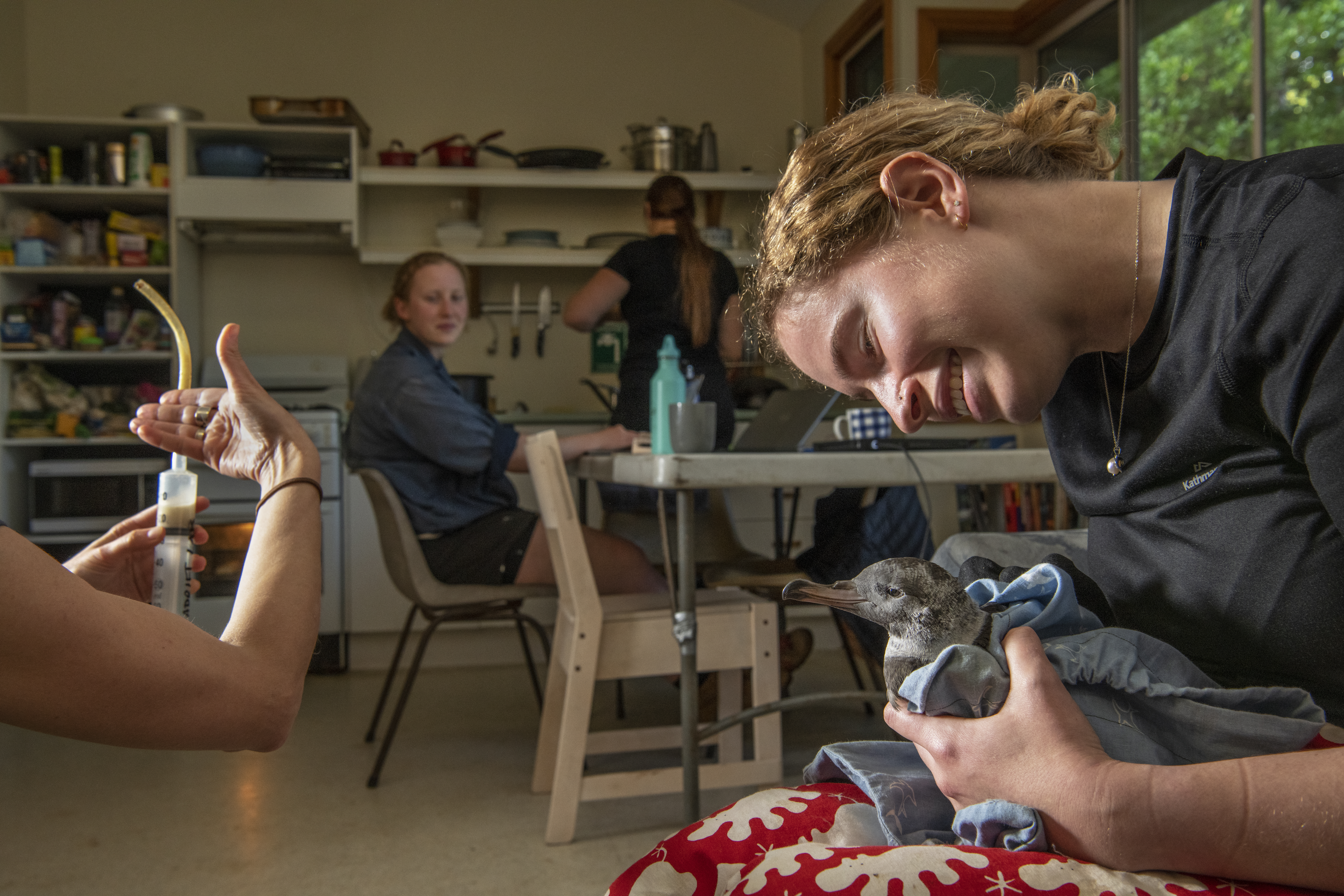
As Alex deftly exposes the proventriculus – the equivalent of our stomach – there’s a loud collective gasp. The organ is bulging, distorted, almost rupturing – before Alex snips it open to remove piece after piece of plastic, 202 in total, of various shapes, sizes and colours. About 16 are recognisable as bits of bottle tops, three are nurdles (pea-sized pieces of polymer used in the manufacture of larger plastic objects) and the rest are impossible-to-identify fragments that could have been floating in the ocean for decades.
Together the plastic pieces weigh 16g – about 5 per cent of the 300g or so this sickly bird weighed. (Healthy fledglings should each weigh at least 700–800g.) The team’s record haul so far is 276 pieces that together weighed 64g. In among the plastic are some natural objects you’d expect to see in any healthy shearwater – a few pumice stones that, like gravel ingested by chickens, help grind food in the first part of the digestive system, and some squid beaks. The latter is a clue as to why plastic is inside these chicks, because it hasn’t come from the largely pristine LHI. It’s been collected hundreds of kilometres away – across a triangular-shaped area of water between the island, Sydney and Brisbane – by their parents who possibly mistook floating plastics for prey and then unknowingly regurgitated it into the chicks’ mouths.
“We’ve had all sorts of things turn up in these chicks over the years – bottle tops from soft drinks and wine bottles and lots of balloon clips, pen lids and parts of glow sticks used on fishing trawlers,” Jenn says. Plastic spacers used for tiling are the most recognisable items she sees in large numbers. Jenn suspects these may enter the ocean after being washed into gutters or stormwater drains located near construction sites on mainland Australia.
A seabird specialist and expert in marine eco-toxicology now based at UTAS, Jenn initiated this project after she first visited LHI in 2007, noticed bits of plastic lying about in shearwater colonies and wondered what impact, if any, it might be having on the birds. Jenn’s known Alex professionally since 2005 and in 2009 the pair began working together on plastic pollution in LHI’s flesh-footed shearwater colonies. They formed the Adrift Lab, have been making annual visits to the island ever since, and most of the chicks they’ve necropsied in that time have had plastic in their digestive systems. The LHI colony, they believe, provides an unrivalled opportunity to expose potentially wider ramifications caused by plastic pollution.
“We’ve shown that chicks with more plastic grow more slowly, and have changes in their blood chemistry,” says Alex, the NHM’s senior curator of birds. He takes feathers, wings and blood back to the UK for analysis from these trips and sends the squid beaks to a research colleague in Portugal to be identified. “The plastic-affected chicks have more cholesterol and lower blood calcium, and some have higher heavy metal contaminants in their feathers. Some of our research has shown that all it takes is a single piece – just the presence of plastic – to cause changes in the blood chemistry.
“But really you just have to look at the condition of the birds with plastics in them to know it doesn’t do them any good.”
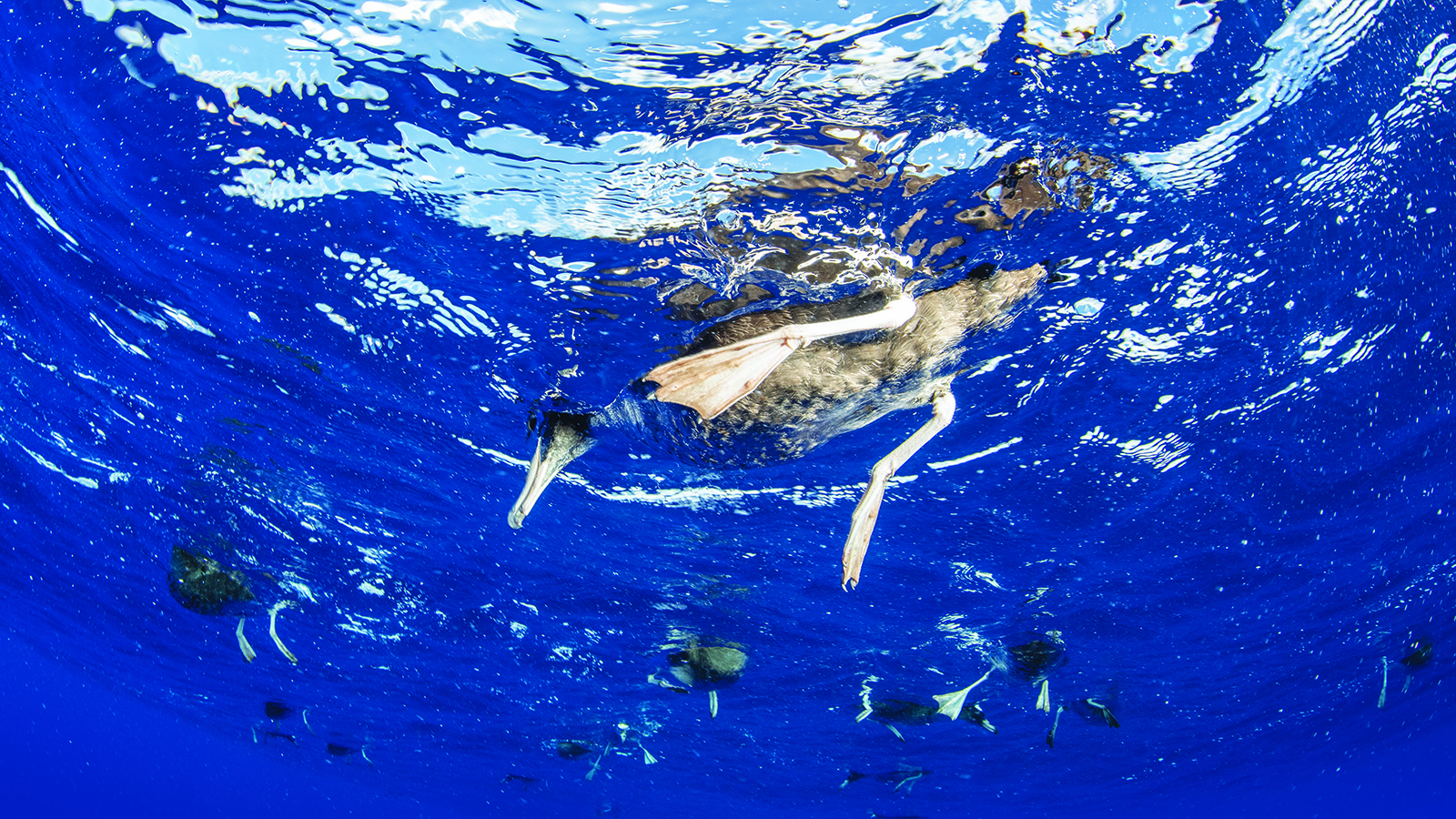
Jenn observes that plastic consumption affects individuals in the colony differently. “And we don’t fully understand why that is,” she says, elaborating that in some plastic-affected birds the wings appear perfect, but their heads seem small, while in others their wings are stunted but they have normal-sized heads. Clearly malnutrition is a factor when a bird’s stomach is so full of indigestible rubbish that there’s no room for real food. And then there are the indicators of some sort of trauma in the blood. But what other physiological effects might be occurring?
It’s hoped a range of research projects underway within the program may shed light on how plastic is affecting the physiology and behaviour of the birds. And that, in turn, could suggest how plastic in the environment might also be affecting the health of other animals and even humans.
One project, for example, headed by Dr Jack Auty, a human physiologist and lecturer in the UTAS School of Medicine, is investigating whether ingested nano plastics (sub-microscopic, broken-up particles of plastic) can cross the blood–brain barrier in these birds. This is the research for which the shearwaters’ brains are being taken during some of the necropsies. It’s also Jack who’s taking liver, kidney and spleen samples. “These are organs that each filter blood in a unique way and we know from nanomedicine that those three organs are where [plastic] particles can accumulate.”
He notes a fibrotic kidney in a bird opened for a necropsy. “That means it’s had repeated damage to the kidney,” Jack explains. “Essentially it’s organ scar tissue, like what alcoholics get in their liver.”
He also points out that the lining of the proventriculus in most of the birds with high plastic loads is smooth, when it should be rugose – with folds like corrugated iron to increase the surface area for digestion. That’s perhaps been caused by physical abrasion from the indigestible plastic.
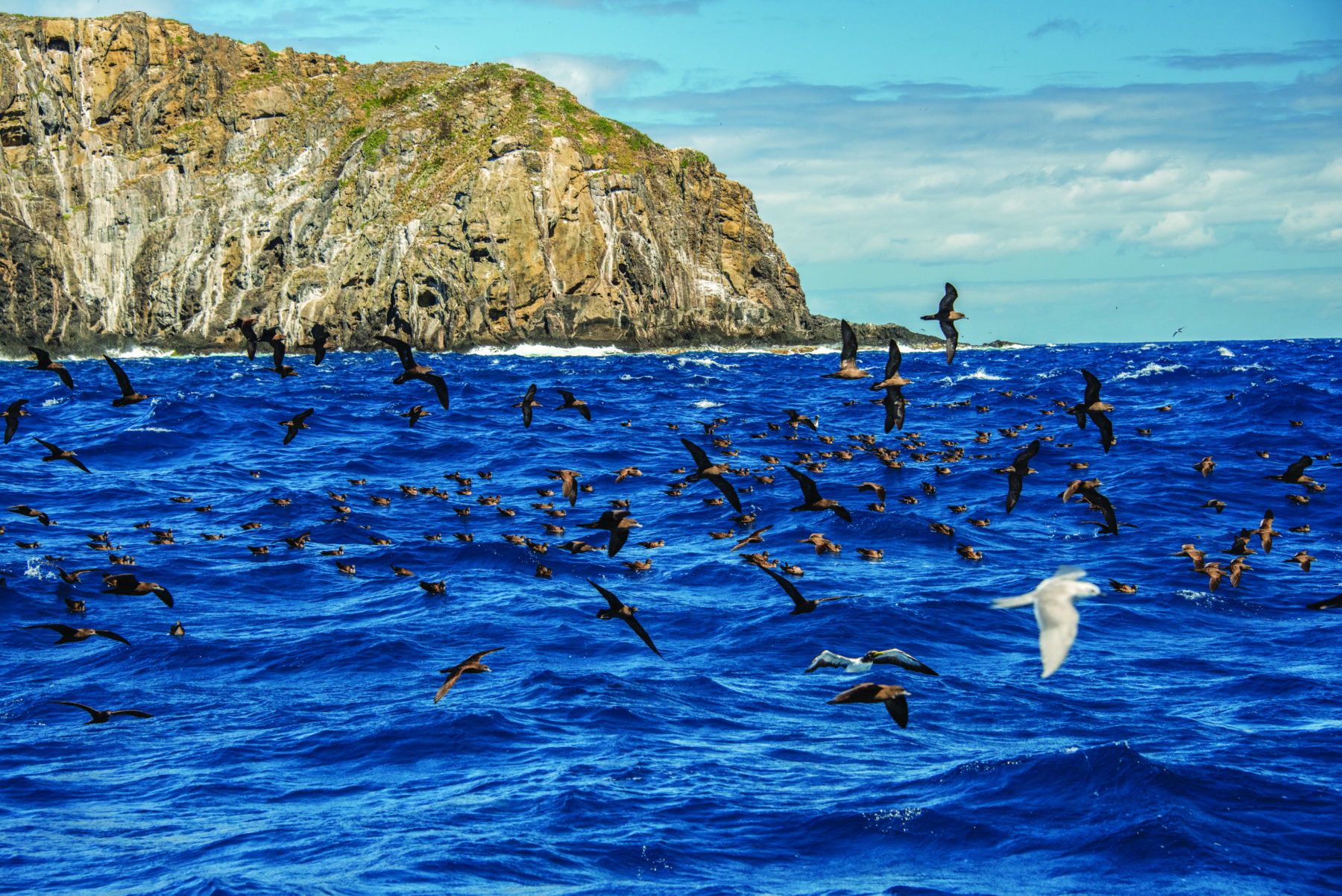
One of Jack’s areas of expertise is the human immune system and he’s starting to now become familiar with its parallels in the shearwater immune system. “A lot of what I do is look at the physical response to the plastic and how the immune system responds to the indigestible, hard, pointy characteristics of it,” Jack says. “I’m finding out that the [physiological] pathways involved [in the response] are the same as those in asbestos-
induced inflammation in humans.”
“So initially we started small and simple, looking at how much plastic was in the birds,” Jenn says. “Was that changing over time? Did colour matter? Did type matter? It was pretty basic because there was not much information then about this.
“Each year we started understanding more and more about the scope and severity of the problem and that the ingested plastic affects multiple organs and tissues – potentially even the brain and migration,” she says. “Every time we answer a question, I’ve got six more lined up. As we started to realise it was a much bigger and more complex problem, we began bringing in more people, like Jack, to collaborate. And it’s grown from there.”
Jenn has also had a suite of bright young PhD students pass through the lab under her tutelage during the past decade. One of the latest is Megan Grant, who’s been looking at the impact on the terrestrial environment of the plastics the birds bring to the island.
It’s well known that seabirds are vital to the survival of terrestrial ecosystems on the world’s islands. They transport seeds and improve island soil productivity by excreting massive amounts of guano, which is rich in phosphorus and nitrogen. Research also shows these nutrients are vital to the productivity of reefs and fisheries around islands because they wash into the ocean.
“So nutrients brought by seabirds help keep island environments running,” Megan explains. “But seabird populations generally are in decline all over the world due to a huge range of pressures.” What will this decline mean to the productivity of the world’s islands? And how will that affect the many millions of people who depend on that for survival?
Megan’s work suggests plastics ingested by seabirds could be making this guano story far more complex than previously thought. She’s exploring how chemical pollutants that leach from the plastics while in shearwater digestive tracts might pass into the soil in guano. She still has a lot of data to crunch and more analyses to be made. But so far she’s identified that soil in the site most heavily used by nesting flesh-footed shearwaters on LHI has elevated levels of heavy metals such as cadmium and lead and the source is believed to be ingested plastic.
Since the project began, Jenn’s team has also been entering the colonies at night to lavage fledglings – gently introducing sea water into their stomachs to purge the ingested plastic, perhaps giving them a better survival chance. All the standard measurements are also taken and the chicks banded – so far, about 800 from the Neds Beach colony alone.
Chicks that fledge successfully head towards the North Pacific, where they’ll spend the next four years flying, occasionally resting on the ocean but never touching down on land. These birds will glide over and forage in the waters between here and the Sea of Japan for squid or fish – locating prey by smell while in the air from as far as a kilometre away. And they’ll dive down as deep as 60m to make a catch – truly remarkable when you know these vertebrates are built primarily for life in the air and that coping with the pressure and lack of light at such a depth must require remarkable physiological adaptations.
Under ideal circumstances they would keep doing that – just flying and fishing – until they attain sexual maturity and instinct calls them back to LHI, where they began life. Then if all goes as it should, they’ll return annually for another three decades, meeting up again and again with the same partner and using the same nesting burrow.
Jenn recently added early October visits to LHI for a capture-mark-recapture project in the hope of identifying returning adults, to see how many chicks are making it back to the island and how secure the population might be. At this stage, all she’ll say is that she’s “very concerned” about what she found. She’s waiting to pull together a fourth year of data on that project before she goes public with her findings. She also wants to confirm where and what fledglings do in the first weeks and months after they leave the island. And how does that differ in chicks who’ve been fed plastics by their parents and those that haven’t? Yes, you can still find fledglings that have only ever been fed fish and squid.
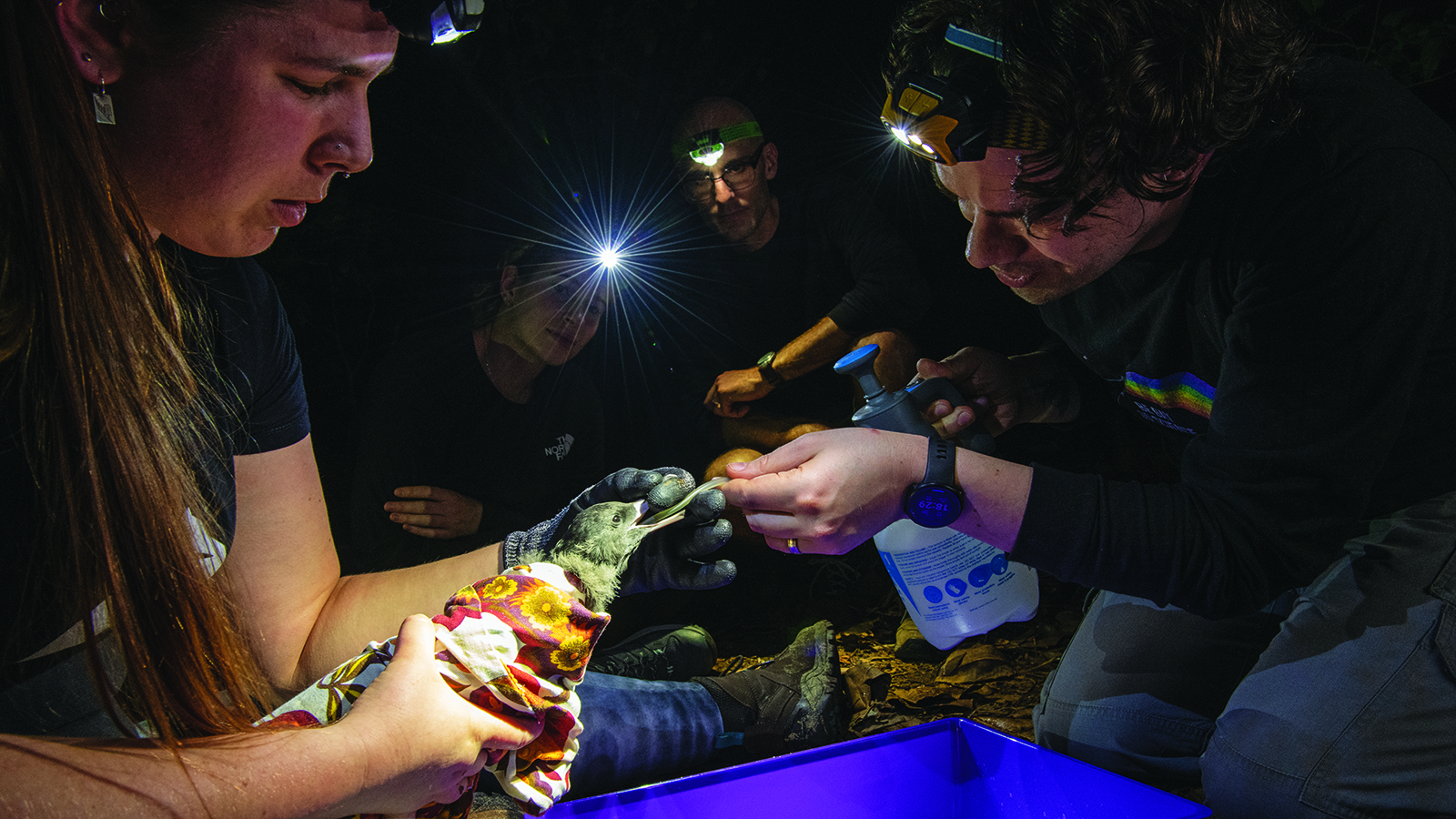
And so this fledging season the team has fitted solar-powered satellite tags onto five chicks that had no plastic in their stomachs and 10 that had bellies full of it but were still big and strong enough to successfully leave the island. Lavaging revealed and removed the plastic at the time they were tagged. Jenn is receiving real-time transmissions from those tags for the next 12 months, after which they’ll drop off when the bird undergoes its first feather moult. She suspects, however, that she’ll stop receiving transmissions from most, if not all, of the plastic-affected chicks as they die and plunge into the ocean, unable to cope with the rigours of the demanding shearwater lifestyle.
This work is very clearly not a simple research program on birds. Plastic pollution is its core remit and the strongly
recurring focus of every project being run within it. What it’s showing is that, even if you’re not interested in the welfare of seabirds, you should be concerned about what plastic pollution might mean for human health and welfare.
Jenn, Alex and the Adrift Lab team have no doubt plastic pollution is a global issue as serious as climate change.
“There’s plastic in our blood; there’s plastic in our guts,” Alex points out, although it’s not exactly clear yet what that might be doing to us. “It’s everywhere – from the top of Mt Everest to the bottom of the Mariana Trench and under Arctic sea ice.
“Even if we stop making plastic today, plastic in the oceans would increase massively until at least 2050 and beyond,” Alex says. And then it’s in the environment for thousands of years.
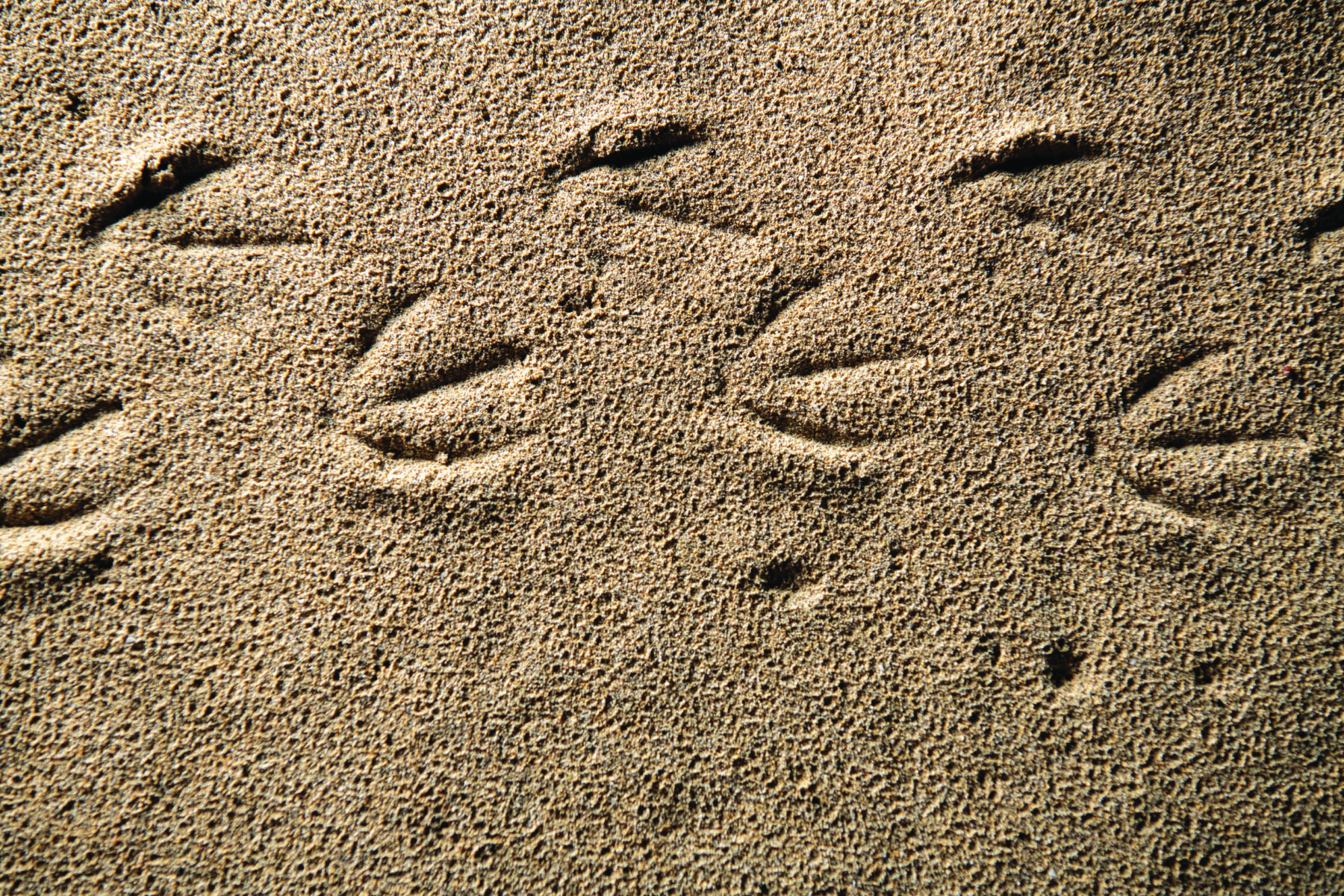
He doesn’t believe getting rid of plastic is the solution, because it’s now essential for so much of modern life. “The key thing is that plastics are not inherently bad,” Alex says. “The problem arises when there are leaks in waste-management streams – so that a plastic bottle ends up in the ocean. That’s where the biggest issue is. The answer is finding and fixing those leaks in waste-management streams and looking at whole life cycle production of plastic.”
As a first step to fixing the problem he’d like to see international policy agreements with binding targets, similar to those for carbon dioxide production.
Megan adds that she’d like to also see better education around plastics. She personally does several activities a year with schoolchildren to tell them about plastics in general, about seabirds and how it impacts them.
“I think half the problem is that people don’t know where plastics come from, so how can they truly understand how to use a product properly if they don’t even know its origin?” she asks. “We really need to bring in education programs that explain both that and recycling programs, because people don’t know how to recycle properly.”
Jenn joins us to scope Neds Beach on my final morning on the island – although I plan to return simply as a tourist one day to enjoy its many wondrous natural features.
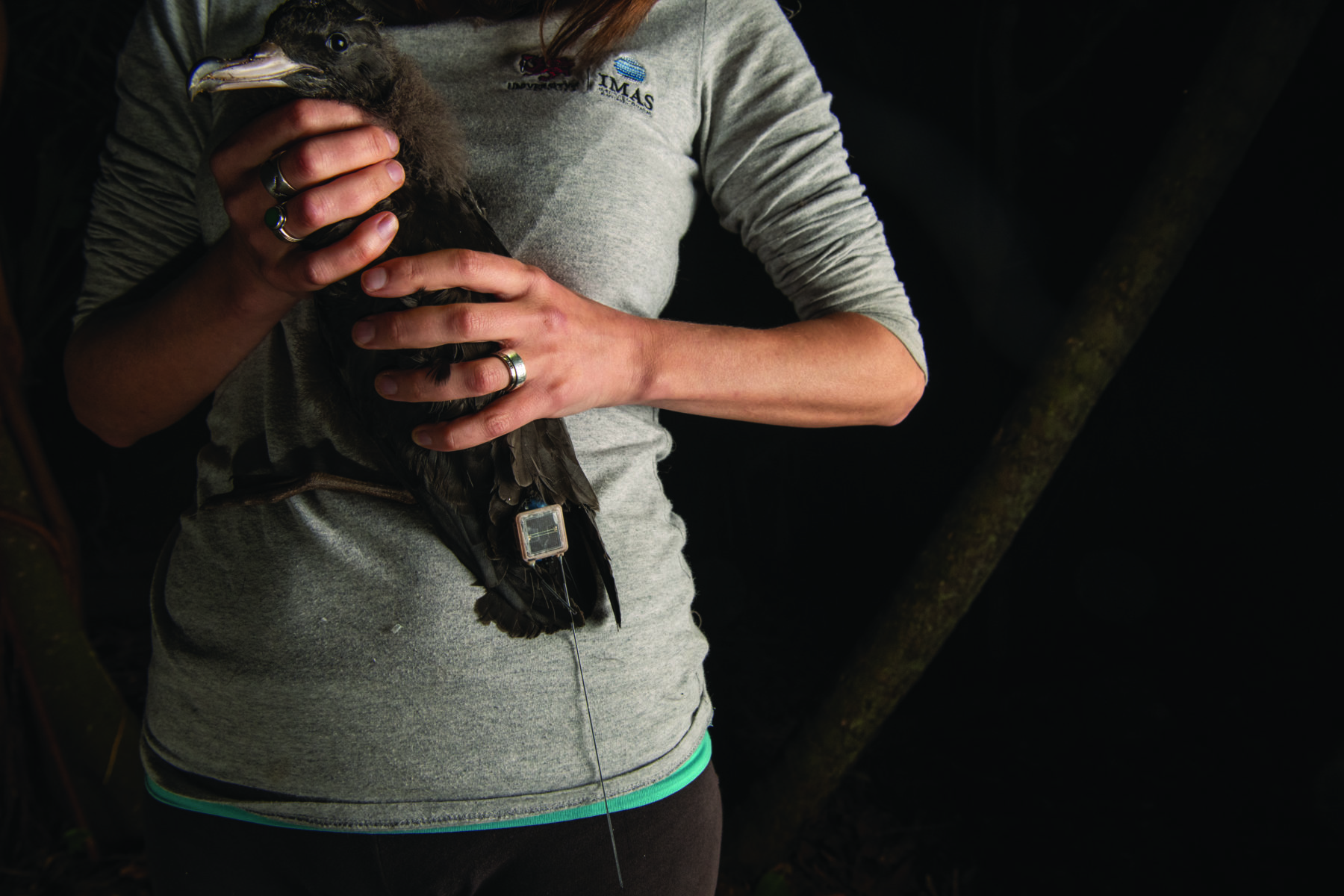
The scene is similar to that of the previous three mornings as we quickly spot dead and dying fledglings. Jenn gently picks up a struggling chick, removes seaweed from its feathers, holds it close to provide warmth and comfort and drops her voice as she speaks so as not to add further to its distress. It’s another struggling fledgling that’s almost drowned and clearly doesn’t have much longer to live.
“Ah, he’s so emaciated and thin that he wouldn’t have had energy or fat reserves to make it,” she says softly. “And he has minimal muscle so even if he didn’t have the down and water-logging problem that he’s clearly had, getting lift off the water would have been so hard.”
Suddenly, however, her mood lifts noticeably as she spots something in the sand – a line of footprints.
“Look at that run for freedom,” she says with delight. The prints appear strong and unwavering, which suggests the chick that produced them probably had a good chance of making it. “That’s definitely a run for the ocean and a run for freedom. What a beautiful sight!”
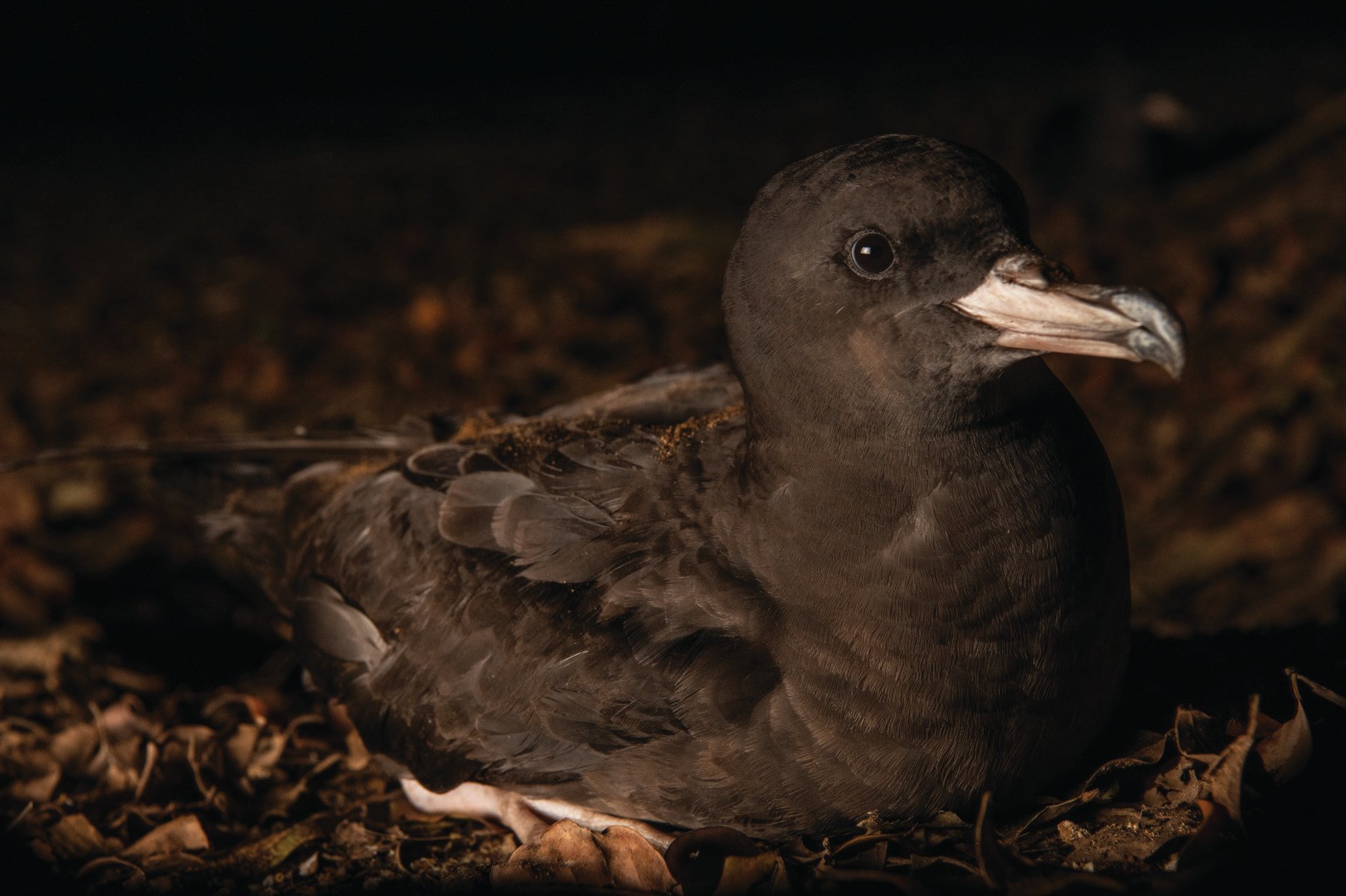
Life in the colony
Flesh-footed shearwaters arrive at LHI in their thousands from late September to early October and leave in May.
They come from 10,000km away near the Sea of Japan, flying non-stop for 10 or more days without eating. They arrive exhausted, hungry and drop from the sky at night like dead weights. They land with a thud, often on the heads and shoulders of Jenn and her team when they’re in
the colonies. These descents are highly targeted: the birds land within metres of the same nesting site they’ve burrowed out in a previous year on the sandy floor of a LHI forest.
How they pinpoint these burrows so precisely is not fully understood. But shearwaters have exceptional eyesight, an extraordinary sense of smell and something far beyond the usual five senses available to most mammals. “They seem to have a kind of amazing mental map of where their burrow is, and although they can’t see it because it’s hidden by the forest canopy, they use some sort of precision-GPS system to find it,” Jenn explains. These navigaional skills work on the large scale too, enabling shearwaters to navigate vast distances with no apparent visual land- marks to use as guides. “They navigate thousands of kilometres of open ocean as if they have a perfectly drawn world map locked in their brains,” Jenn says.
If they live a charmed life and survive to their species’ potential, these birds will return each year to meet with the same partner and use the same burrow to raise young for as many as 30 years. When they find their partners at the
beginning of the season they court and preen each other moving in unison, arching their necks and bobbing their heads in a dance that can last for hours at a time. And if you listen to the cacophony of screeches in the colony at this time, you’ll hear what to the human ear sounds literally like the repeated cry of “Pick me! Pick me!”
“They don’t associate with one another while over the Sea of Japan, so this courtship is about reuniting at the start of the breeding season,” Jenn says, “to re-establish the pair bond after not seeing each other for three or four months.”
Each flesh-footed shearwater pair lays just one egg a season. Couples share equal time incubating the egg and feeding the chick. The nests are created at the end of a 1–2m-long burrow. At first one adult will remain with the young. But as the chicks grow and need more food, they’re left alone in the burrow during the day while both parents take off to forage.




